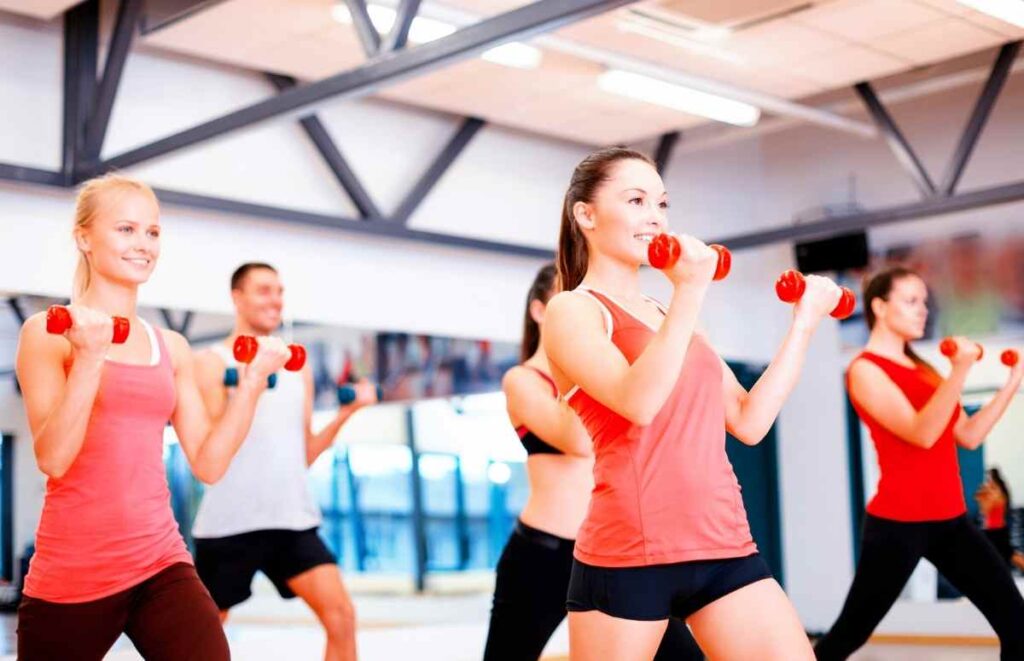Consistent exercise has undeniable benefits for not only your body, but also your mind and general well-being. However, if you are an absolute beginner and have never worked out before, it can be difficult to understand where to start. With a plethora of workout techniques and countless exercises out there, you may not know what is right for you. The workout routine you eventually choose will depend on the reasons you decided to exercise in the first place, and the goals you are trying to achieve.

Getting Started with Exercise
You need to understand that there are multiple new training methods and modules that have come up in recent years. For example, We202 EMS training integrates science and technology to not only help you gain more from the exercise, but also track your individual fitness and progress. Every person’s workout can look very different; one may be engaging in intense muscle-building exercises to achieve a ripped body. Another may be engaging in light aerobics simply to incorporate some physical activity into their new healthy lifestyle. What you choose to do will be defined by your motivation, energy levels, and the benefits you hope to attain. Your goals may be one of the following:
- Losing weight
- Building stamina
- Gaining muscle mass
- Increasing general physical activity
- Improving mental health
Regardless of what you are looking for, it is important to start slow and steady and begin teaching your body what it feels like to engage in physical activity on a regular basis.
Common Fitness Definitions
There is endless information out there, whether you decide to opt for digital tutorials or get the help of an instructor at the local gym. Understanding common fitness terms will help you follow instructions better and know exactly what you are supposed to do.
- Warm-up – Using light physical movement to increase blood flow, heat up muscles, and prepare your body for the exercise.
- Set – Repeating an exercise a number of times, for example, a set of 10 push-ups.
- Rep – Repetition, i.e., the number of times you perform the exercise in a set, for example, one set of 10 reps.
- Rest Period – The time you take to rest between sets.
- Form – The correct posture for an exercise which targets the right muscles. ‘Bad form’ is the wrong posture which strains joints and ligaments, or can even lead to muscle injury.
- Cool-down – Light exercise towards the end of the workout, meant to bring the heart rate back to normal.
Types of Exercises
- Cardio – Cardiovascular exercises are those that aim to bring your heart rate up in order to burn fat, for example, jogging, running, and bicycling.
- Aerobics – Aerobic exercises are similar to cardio, but are defined by continuous movement that promotes core fitness. These can include running, swimming, and even dancing.
- Strength/Resistance/Weight – Strength training refers to building muscle mass and increasing strength. Weightlifting, sprinting, and pull-ups are all examples of this.
- HIIT – High-Intensity Interval Workouts are sets of quick interchanging exercises that include short breaks in between. They follow a timing pattern, for example, 40 seconds of exercise followed by a 20-second break. Each set includes a different exercise, like push-ups, burpees, squats, etc.
- Balance – Balance or stability workouts promote muscle building and overall core strength. They include body-coordination exercises like Tai Chi.
- Flexibility – Stretching and flexibility training aims to promote muscle recovery and improve the body’s ability to move. Yoga is one example of stretching.
- Calisthenics – These refer to muscle-targeting exercises that are often performed using gym equipment. Examples include pull-ups, lunges, trunk twists, and more.
Exercise Plan for Beginners
Now that you know the basics, it is time to start working out. Here are the steps you need to follow as a beginner:
1. Set Realistic Goals
The first step is to check your health, make sure you are good to go, and then begin setting realistic goals. While you can have a large goal, breaking it into smaller milestones is the key. If you want to run for 5 kilometers, for example, the best thing to do is start running for 1 kilometer at a time and gradually build your stamina. It is important to convince yourself to stick to a routine if you want to successfully incorporate exercise into your daily life.
2. Do an All-Rounded Workout
For beginners, it is best to prepare the body with different types of workouts. Your initial physical activity should be a combination of three different kinds of exercises:
- Stretching – If you have been leading a sedentary lifestyle, it is essential to begin stretching those muscles so you don’t injure them with exercise. Spend at least 5 minutes a day doing various stretching moves, with each stretch lasting at least 10 seconds.
- Cardio – Start by walking or jogging for 10-30 minutes at least four times a week. At this stage, you should not do it to the point that you are breathless, but also don’t keep it too easy for yourself. You should begin to feel your heart rate rising and your muscles mildly straining.
- Strength – Start performing beginner exercises to the best of your stamina. Begin with simpler ones like jumping jacks, and build on to ones like squats, burpees, and lunges. When you get comfortable, you can begin using weights that allow you to comfortably perform sets of 10. Eventually increase the weight in the following days and weeks.
3. Make a Weekly Plan
Workout tends to be much more regular if you have a plan. Here is a sample plan a beginner can follow without any gym equipment:
Monday – 30-minute brisk walk, alternating with jogging at a comfortable pace.
Tuesday – Rest.
Wednesday – 10-minute brisk walk followed by 10 minutes of exercise including 10-rep sets of lunges, sit-ups, jumping jacks, and squats.
Thursday – Rest.
Friday – 20-minute jog.
Saturday – Rest.
Sunday – 10-minute run, or 10-rep sets of lunges, sit-ups, jumping jacks, push-ups, squats, burpees, and a 20-second plank.
All workouts should be preceded by and ended with 5 minutes of stretching.
4. Explore Exercise Equipment
Many people find that they are more motivated when working out on gym equipment. You can explore your local gym or look into setting up your own. If you are considering a home gym, you can find quality equipment at Nirvana Fitness.
As a beginner, here is some gym equipment you should try out.
- Treadmill – Walking on a treadmill is an excellent cardio activity, and one that beginners can easily take up. Start by walking at low intensity for 15 minutes and build up your pace over the next week.
- Weights – Free weights are safe to explore, provided that you start slow. Begin with weights that are entirely comfortable to hold and learn the right form before you move on to heavier weights that strain your muscles.
- Stationary Bike – Bicycling is another fun exercise for beginners. Start with a low intensity and build up resistance according to your increasing stamina.
You can also invest in accessories and tools like exercise bands, stability balls, and jumping ropes to keep your workouts fun. You can check out many different gym accessories at Nirvana Fitness.
Working out as a beginner can seem daunting, but you’ve taken an excellent first step in the right decision. Slow and steady incorporation of physical activity into your lifestyle will lead to attaining a healthier body and a happier mind!


